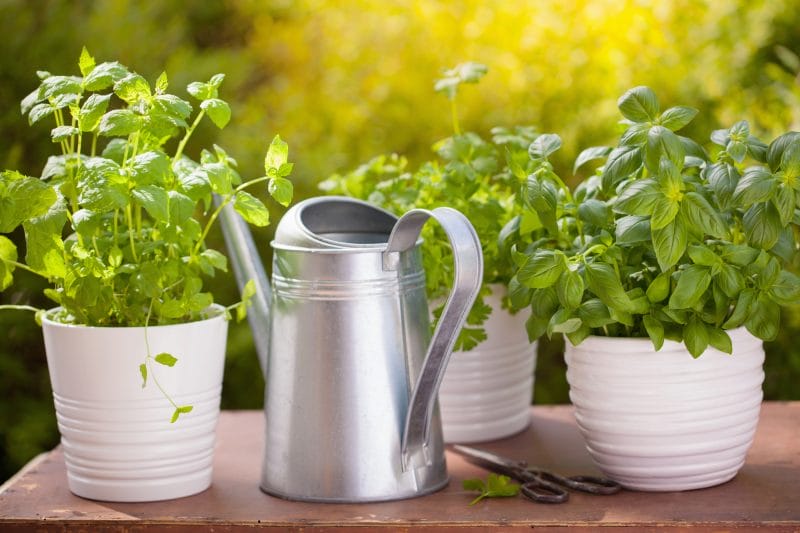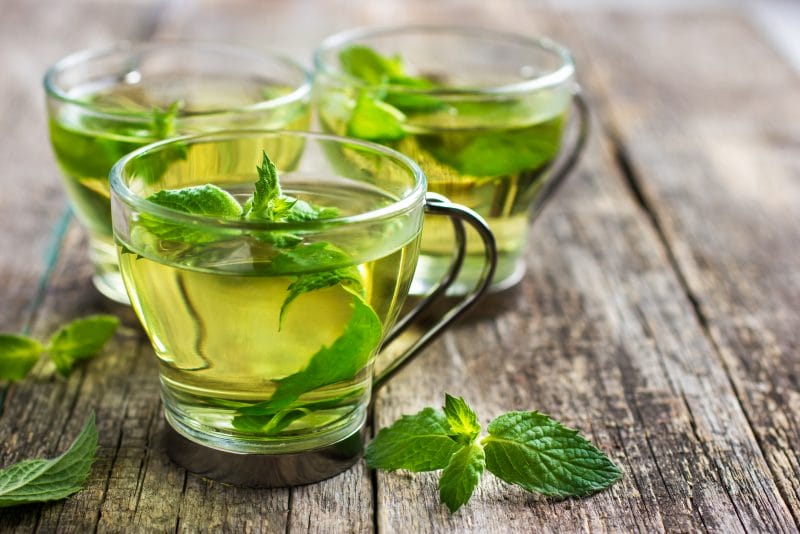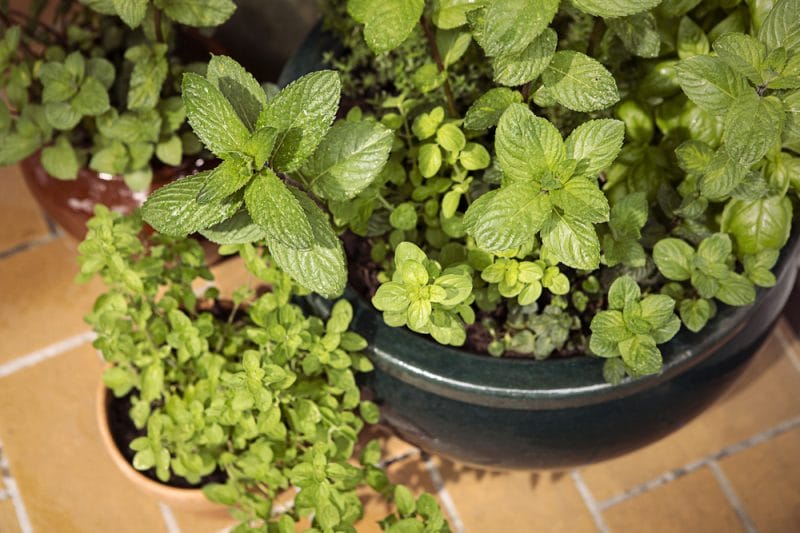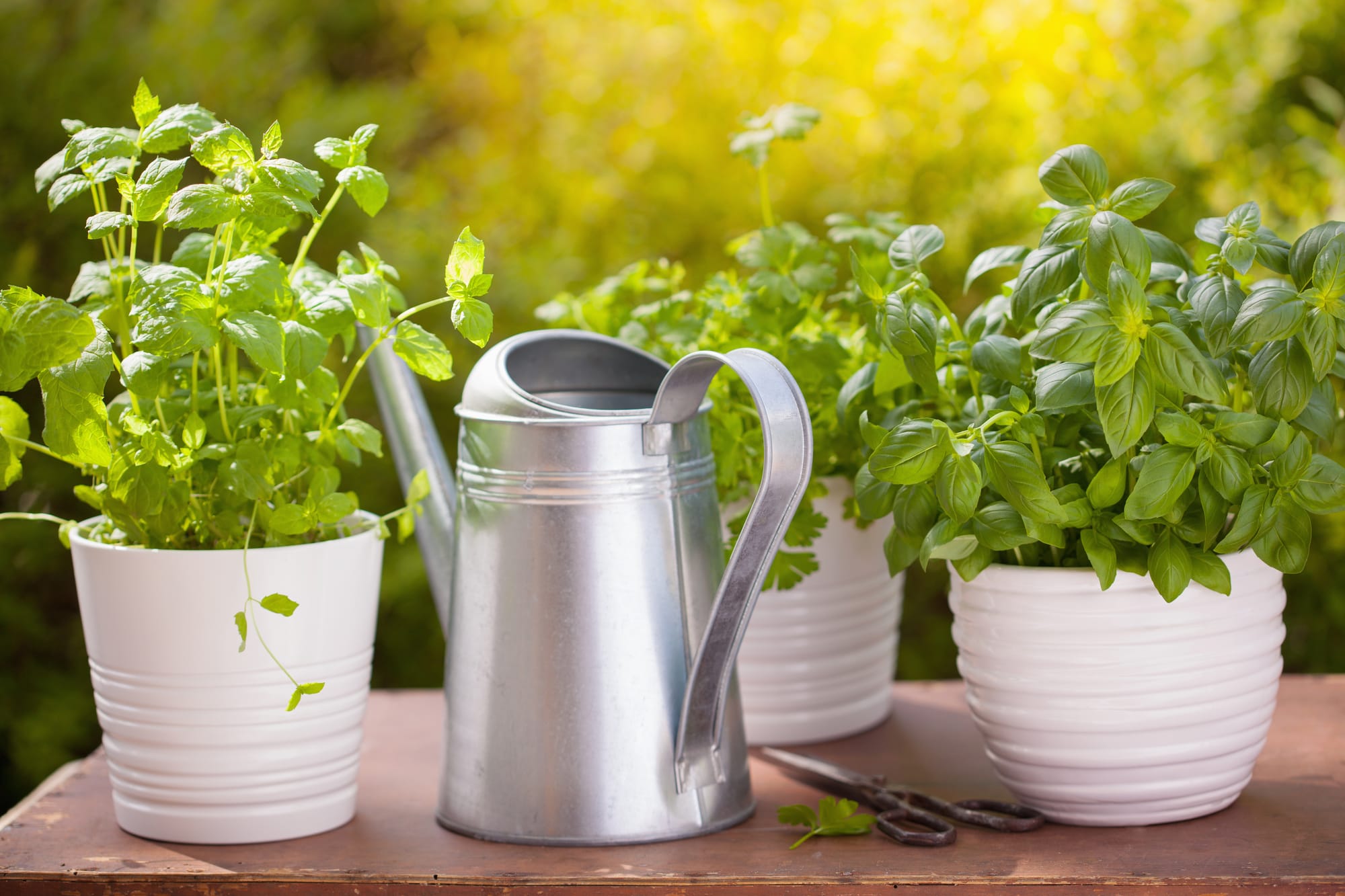
Mint plants are a popular herb known for their refreshing aroma and flavor. They're often used in cooking, drinks, and as natural remedies. Mint plants are easy to grow and can be found in various types, such as peppermint, spearmint, and chocolate mint. They're usually grown for their leaves, which can be used fresh or dried.
Mint plants generally prefer consistently moist soil and should be watered when the top inch of soil feels dry to the touch. In hot, dry weather, mint plants may need to be watered daily. Watering once or twice per week may be sufficient in cooler, wetter weather. It's important to avoid over-watering mint plants, as this can lead to root rot.
Are you looking to add some refreshing mint to your home garden? Proper watering is essential for the health and growth of mint plants. But how much water do mint plants need? Keep reading to find out!
Table of Contents
Factors that affect mint plants
- Container size and type: Mint plants grown in smaller containers will generally need to be watered more frequently than those grown in larger containers, as the soil in smaller containers tends to dry out faster. Similarly, containers made of materials that retain moisture, such as ceramic or plastic, may require less frequent watering than those made of materials that dry out quickly, such as terracotta.
- Soil type: Mint plants grown in sandy soil will generally need to be watered more frequently than those grown in heavier, clay-based soil, as sandy soil tends to drain more quickly. Using a well-draining soil mix is also a good idea to prevent over-watering.
- Environmental factors: The humidity and temperature of the environment can also affect the water needs of mint plants. In hot, dry environments, mint plants may need to be watered more frequently to prevent the soil from drying out. In cooler, wetter environments, watering may be needed less frequently.
- Plant age and size: As mint plants grow and mature, their water needs may change. Young, newly-planted mint plants may need more frequent watering to establish their roots, while established mint plants may be able to go longer between watering sessions.
It's important to keep an eye on your mint plants and adjust your watering schedule based on these and other factors that may affect their water needs.
Signs of Over-Watering or Under-Watering Mint Plants
Over-watering and under-watering can harm mint plants, so monitoring their watering needs and adjusting your watering schedule as needed is important. Here are some signs to look out for that may indicate that your mint plant is being overwatered or underwatered:
Signs of over-watering:
- Soggy or waterlogged soil
- Yellowing mint leaves
- Stunted or slowed growth
- A musty or moldy smell
- Root rot (visible as brown or black, mushy roots)
Signs of under-watering:
- Dry or brittle leaves
- Wilting or drooping leaves
- Stunted or slowed growth
- Dry, cracked soil
If you suspect your mint plant is over or underwatered, try adjusting your watering schedule and techniques to see if the problem improves. If the issue persists, consulting with a local nursery or gardening expert may be helpful for further guidance.
5 Tips For Proper Watering
Here are some tips for proper watering of mint plants, with a little bit of humor thrown in:
- Don't be a “mint-timidator” – Don't be afraid to water your mint plants! They prefer consistently moist soil, so don't be shy about giving them a drink when they need it.
- Get to the root of the problem – Make sure to water the plants at the base rather than from above. This will help prevent the leaves from getting wet, which can encourage fungal growth.
- Don't be a “mint-sippy” – Avoid using cold water to water your mint plants, as this can shock the roots. Instead, use room-temperature water to give them a nice, warm drink.
- Don't be a “mint-o-phobe” – If you're worried about over-watering your mint plants, consider using a self-watering container or drip irrigation system to ensure consistent moisture. This will take the guesswork out of watering and help prevent any mint-astrophes!
- Don't be a “mint-nagger” – Observe your mint plants closely and adjust your watering schedule as needed. If the top inch of soil feels dry to the touch, it's time for a drink. If the soil is still moist, give your mint plants more time to soak up the H2O.
Benefits of Growing Fresh Mint

Mint plants offer many benefits, both in the garden and the kitchen. Here are a few fun ways to think about the benefits of growing mint plants:
- Mint is like the ultimate party guest – It's always there when you need it, ready to add a burst of flavor and freshness to any occasion.
- Mint is a real “breath of fresh air” – It has a refreshing aroma and can also help deter pests and improve the air quality in your home.
- Mint is the ultimate “green thumb” – Its bright, colorful leaves and a sweet aroma make it a visually appealing and fragrant addition to any garden. Plus, it's easy to grow and spreads quickly, so it's a great choice for even the most inexperienced gardeners.
- Mint is a natural “chill pill” – Its invigorating scent can help boost your mood and concentration, and it's a natural stress reliever, so it's like a little bit of “mint therapy” right in your own backyard.
- Mint is a real “cool” plant – It prefers a cool, moist environment, making it a great choice for shadier garden areas. And in hot weather, a sprig of mint in your water or a minty cocktail can help cool you down.
- Mint can make the ultimate beverage – “Mint-tea”, Mint-water, or Herbal Tea. Try adding mint to a glass of iced tea or try adding adding sweet mint to a glass of water. Oh, You're welcome!
When Should You Plant Mint?
Mint is easy to grow and can thrive in various soil types and climates. It's a hardy herb that is well-suited to growing in containers or in the ground. In most regions, mint can be planted either in the spring or fall. Spring planting is typically done after the last frost date, while fall planting can be done a few weeks before the first frost date.
Growing Mint Plants In Containers (Indoors & Outdoors)

Mint plants are generally easy to grow and can thrive indoors with the right care. Here are some tips for growing mint plants indoors:
- First, I recommend using a container with drainage holes. This will help the excess water escape.
- Use a well-draining soil mix. If you do not have a good soil mix, add perlite or vermiculite to the soil mix to help improve drainage. Mint plants do not tolerate standing water, so it's important to use a well-draining soil mix.
- Loosen the soil and dig a hole slightly larger than the plant's root ball. Gently remove the plant from its original container, place it in the hole, and fill it with soil, gently firming it around the roots.
- Choose a sunny location: Mint plants prefer plenty of sunlight, so choose a location that receives at least 6 hours of direct sunlight per day. A south-facing sunny window is a good choice. If a window is not an option, consider purchasing a grow light.
- Water regularly: Mint plants prefer consistently moist soil, so water them when the top inch of soil feels dry to the touch. In hot, dry weather, mint plants may need to be watered daily. Watering once or twice a week may be sufficient in cooler, wetter weather. Avoid over-watering, as this can lead to root rot.
- Fertilize regularly: Mint plants benefit from regular fertilization to encourage healthy growth. Use a balanced liquid fertilizer every two weeks during the growing season. Do not over-fertilize.
- Prune regularly: Mint plants can become leggy and unruly if not pruned regularly. To encourage new growth and keep the plant looking neat, prune the tips of the stems regularly.
It's worth noting that mint plants can be aggressive growers and may need to be contained in a container or a designated garden area to prevent them from spreading too much. In general, mint plants are easy to care for and can thrive with minimal attention, making them a great choice for beginning gardeners.
Mint is one of my favorite herbs. With these tips in mind, you can successfully grow mint indoors or outdoors and enjoy their refreshing aroma and flavor all year round.
Mint Varieties
There are various types of mint plants, each with its own unique aroma and flavor. Here are a few popular types of mints:
- Peppermint: Peppermint has a strong, distinctive peppermint aroma and flavor and is often used in cooking, beverages, and natural remedies.
- Spearmint: Spearmint has a milder, sweeter flavor than peppermint and is commonly used in cooking and beverages.
- Chocolate mint: As the name suggests, chocolate mint has a chocolatey aroma and flavor and is often used in desserts and beverages.
- Apple mint: Apple mint has a sweet, apple-like aroma and flavor and is often used in desserts and beverages.
- Lemon mint: Lemon mint has a lemony aroma and flavor and is often used in cooking, beverages, and natural remedies.
- Basil mint: Basil mint has a basil-like aroma and flavor and is often used in cooking and as a natural remedy for digestive issues.
There are a variety of mint plants, including orange mint, ginger mint, and pineapple mint, to name just a few. Each mint type has unique characteristics and uses, so it's worth experimenting with a few different types to see which ones you like best. Often, I mix
Did you know Lemon Balm is in the mint family?
I personally grow Peppermint, Chocolate ming, Pineapple mint, Orange mint, Strawberry mint, and Lemon Balm and find each unique.
What Diseases Are Mint Plants Susceptible To?
Mint plants can be susceptible to a variety of diseases, including:
- Powdery mildew: This is a fungal disease that appears as a white or gray powdery substance on the leaves and stems of the plant. It can cause the leaves to turn yellow and curl and may reduce the plant's overall vigor.
- Verticillium wilt: This is a fungal disease that causes the leaves of the plant to turn yellow and wilt and can eventually lead to the death of the plant.
- Root rot: This is caused by a fungus that attacks the plant's roots, causing them to rot and die.
- Bacterial blight: This is a bacterial disease that causes the leaves and stems of the plant to become necrotic (dead) and can lead to the death of the plant.
- Mint rust: This is a fungal disease that causes yellow or orange pustules on the plant's leaves and stems. It can cause the leaves to become distorted and reduce the plant's overall vigor.
To prevent these diseases, it is important to plant mint in fertile soil, provide adequate water and enough oxygen (airflow), and avoid overcrowding. If you notice any of these diseases on your mint plants, it is important to remove and destroy infected plants to prevent the spread of the disease. Keeping an eye on your plants will help maintain the plant's health.
Frequently Asked Questions About Mint
Does Mint Need Full Sun?
Mint is a hardy and resilient herb, capable of growing in all conditions. While mint does best when grown in full sun, it can also thrive in partial shade. Mint prefers to grow in moist soil and needs at least four hours of sunlight daily.
Should I Water Mint Plants Every day?
If you are growing mint outdoors, it is important to water it regularly as the soil can dry out quickly. Depending on the weather conditions, you may need to water your mint more or less frequently. In general, if you water your mint once or twice a week, that should be enough for it to remain healthy and strong. Additionally, make sure you are not overwatering. Remember, mint does not like soggy soil.
Can I Plant Mint in Full Shade?
You should avoid planting mint in areas with dense shade or heavy winds, as these conditions can stunt its growth and make it more vulnerable to disease or pests. When planted in full sun, mint will produce an abundance of fragrant leaves that are perfect for use in teas and culinary dishes. With proper care and watering, mint can be a rewarding addition to any garden, regardless of the light level present.
For more garden herb info, check out this companion article: How To Choose and Grow The Best Herbs
Conclusion: Watering Your Mint Plants for Maximum Flavor and Aroma
In conclusion, mint plants generally prefer consistently moist soil and should be watered when the top inch of soil feels dry to the touch. In hot, dry weather, mint plants may need to be watered daily. Watering once or twice a week may be sufficient in cooler, wetter weather. It's important to avoid over-watering mint plants, as this can lead to root rot, and to check the soil moisture level with a moisture meter or by sticking your finger about an inch into the soil before watering.
The specific watering needs of mint plants can vary depending on various factors such as the size and type of container they're planted in, the type of soil they're planted in, the humidity and temperature of the environment, and the age and size of the plants. Observing your mint plants closely and adjusting your watering schedule as needed will help ensure that your mint plants receive the right amount of moisture.



